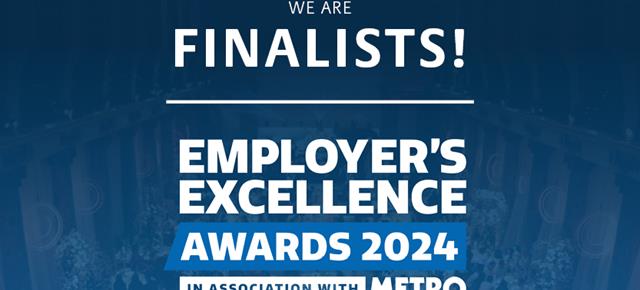Why innovation matters in the personal injury motor claims market
09 March 2021
7 minute read

Carpenters Group’s Injury Resolver Process replaces the current stage 3 court process, and it is this innovative technological solution that will enable insurers to conclude a claim much quicker while keeping the customer at the centre of the process.
Our Chief Legal Officer, Alan Hayes, shares the why and how as he outlines his involvement in the development of Resolver.
How did your development of Resolver begin?
In the autumn of 2017, I picked up a “Notice of Hearing” from the printer which had a Stage 3 hearing date in the following July. This meant that our customer, and the third-party insurer, both had to wait another 10 months for the claim to be resolved, with not much happening in the interim.
It struck us that we could find a much quicker way of resolving the case. We then started work on developing Injury Resolver, which was intended to offer resolution of claims that was equally as robust as the claw process, but at significantly lower cost and without the associated delay. We realised that we could get an Assessor equivalent to a District Judge, who may in fact be the same person, to deal with the case much quicker and at reduced cost.
With pressure mounting on the courts due to a big increase in civil and criminal cases awaiting a hearing, especially during the pandemic, what benefits does technology like Resolver provide for insurers?
Injury Resolver offers a number of benefits for insurers.
- Life-Cycle
The most important benefit of Injury Resolver is probably the significant reduction in life-cycle. Our pre-COVID data showed that the average life-cycle of Stage 3 cases that proceed to a court hearing is more than six months longer than cases that proceed through injury Resolver. The pandemic has caused further delays in the court process.
Reducing life-cycle means that insurers can get the claim paid and the file closed quicker, reducing OpEx and unnecessary touch points, and – crucially – the reserve can be realised much sooner than were the case to run through the court process.
- Cost Savings
The costs benefits are not restricted to a reduction in operating expenses. The arrangement includes payment of an Assessors fee that is significantly below the equivalent Stage 3 issue fee, and Carpenters also agrees to accept a reduction in fees payable. In addition to these savings, it may be possible for insurers to achieve a reduction in their defence panel spend.
Injury Resolver offers an additional saving when compared to the new entrants into the market. The process does not involve the introduction of a third-party into the claims process. It does not therefore include the need to fund the operating expenses and profit requirements of an intermediary.
- Talent Development
There is an opportunity for insurers to use Resolver to bring on their talent. Because the rules are agreed between Carpenters and the insurer, and not imposed by the court, requirements such as that the advocate to be a solicitor do not apply, opening up the opportunities for development of senior claims staff, who can run their own cases at the assessment sessions.
- Robust and Consistent Outcomes
All of these benefits are provided in the context of a robust process that delivers reliable results. The Assessors are all highly experienced, senior personal injury barristers, familiar with the issues that commonly arise in injury claims. They are all entirely independent, doing a mix of claimant and defendant work in private practice, and in contrast to the court process all assessors have the time to properly consider the matters in each particular case, as they do not have the pressures of a busy court list. It provides a better service at a lower cost.
How will Resolver work alongside the new MoJ claims portal, due to launch in May?
It was with some surprise that we learned in late February 2020 that the MOJ had abandoned plans to include dispute resolution within the new claims portal. It is not clear how the MOJ expects litigants-in-person to resolve their own cases, short of the need to issue proceedings under Part 7. The absence of an ADR process was contrary to the stated intention of allowing simplified dispute resolution, which had been a pillar of the reforms prior to the February 2020 announcement.
Injury Resolver can play a significant part in filling the vacuum created by the absence of an ADR process. It will play a big role following introduction to Whiplash Reforms now that we know that the MOJ do not intend to replace the current Stage 3 process. While waiting for a Stage 3 hearing can be slow, the process itself is fairly simple. To remove this and not replace it, means that claims will inevitably have to be dealt with in the more cumbersome Part 7 process (unless the long-awaited rules tell us any different). Here, Injury Resolver will come into its own. The increased use of video hearings will enable greater use of Resolver in contested part seven claims, in addition to quantum disputes. The process will go a long way to filling the large hole created by the MOJ in injury dispute resolution.
You have been a crucial part of the Carpenters Group team in terms of delivering innovative and effective solutions to the challenges faced by the industry, how do these solutions ensure the individual customer remains at the centre of the process?
We firmly believe that no innovation or technological solution will succeed unless it puts the customer at the centre of the process. Injury Resolver achieves this. The intention – for all parties – is that the customer achieves the same outcome as in the court process, but the insurers are able to conclude the claim much quicker.
The prioritisation of customer interests is highlighted by that the fact that all of our customers are represented at the hearing. In contrast to services offered by new entrants into the market, each Resolver hearing involves the parties being represented. This provides the best service to our individual client, and the greatest opportunity for issues to be dealt with on the day and a fair outcome achieved. We are aware that some of the new entrants offer paper hearings, with a view to minimising costs, but it is hard to see any scenario where a written submission would provide a better service than personal representation.
How else is technology influencing Carpenters Group’s legal services?
Carpenters introduced our digital MyClaim service in 2015. Unlike some of the products recently launched within the legal sector, MyClaim is both a web-based service and an Android and Apple App available on the Google play and Apple stores. It allows customers to keep track of the claim, receive updates, communicate with their lawyer, exchange documents and information – all from a tile on their phone. We see the provision of this support as a minimum requirement, but it can be only one of multichannel communication options open to our customers.
Our approach is that technology should enhance the customer experience. Technology can, for example, offer greater speed and flexibility to customers in terms of the way they manage their claim, as can be seen from Carpenters MyClaim App and Portal. The App does not replace human support, but instead offers an alternative method of support for those who prefer digital.
Consumer opinion changed regarding the value of a digital journey compared to an offline claim handling route?
We have definitely seen an increased interest in the digital journey. We have also seen continued high demand for personal support, and in reality most claims are run with a combination of both. We have seen an increased demand for the more standard parts of the claim to be dealt with online, but at the key points of the case many customers still want to have a discussion with their lawyer. This means that we will continue to have discussions in relation, for example, to issues around liability, special damages or the value of the Injury claim upon receipt of the medical report.
What role will innovative and digital solutions continue to have within the fast-changing personal injury market?
Innovation and technology will continue to play an increasingly important role in the personal injury motor claims market. Efficient businesses have for some time been looking to streamline the process through digitisation and the use of AI to remove cost while preserving the customer experience. These processes will be increasingly important post reforms.
The main areas of claims activity are always those that involve the highest cost. Following introduction of the reforms, the main area of focus will be credit hire, and potentially credit repair, as more complex repairs increase repair costs and associated hire periods and charges.
Among the innovative solutions that will help insurers to control costs post-reforms is Carpenters Credit Hire Resolver. This is the next iteration of our Resolver process. As with Injury Resolver, it is not a mediation service. We understand that there are a number of cases where the insurer and the CHO each believe in the strength of their case, and the issues need to be determined at a contested hearing. Crucially the claimant needs to give evidence on various points, such as need, impecuniosity and enforceability. Credit Hire Resolver allows this evidence to be given in the form of a contested hearing, but again at significantly reduced cost and timescales compared to the court process. The hearings can take place remotely, and are determined by a senior barrister who is a credit hire expert, familiar with the most recent and relevant case laws, giving both sides confidence in the outcome.
Alan Hayes
Chief Legal Officer, Carpenters Group
Credit: Modern Insurance Magazine














